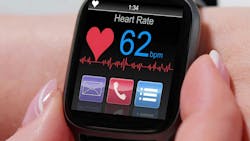Maximizing Battery Life in Medical Wearables (Download)
The market for wearable medical devices is rapidly expanding. Not only are more devices receiving government-standard clearance to diagnose illnesses and monitor life-critical biomarkers, but more users are interested in more personal data to improve their lifestyles. The capability to track metabolic performance, stress, and sleep quality are especially popular features sought by consumers.
Makers of wearable medical devices strive to achieve smaller size, lighter weight, longer operation times, and smarter feature sets. Often, though, these traits outpace battery advances, so designers must come up with novel ways to use batteries more efficiently, and thus increase overall functionality.
